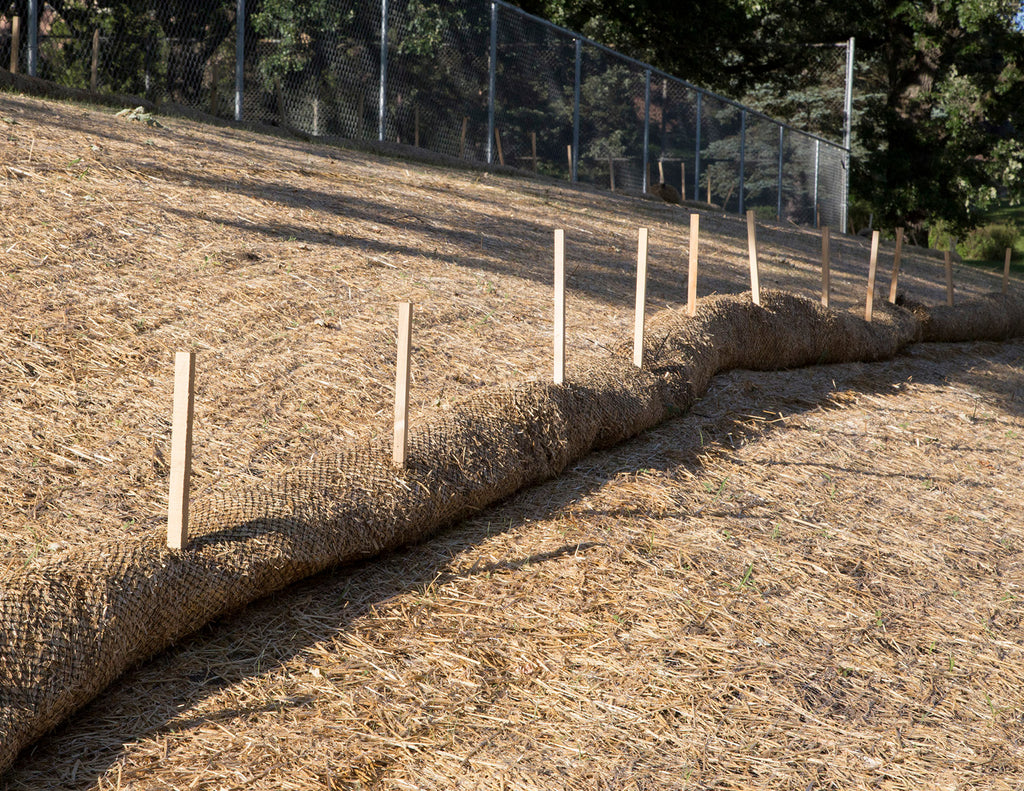- March 28, 2025
- Posted by: wellcoindustries
- Categories: Erosion Control, Jute Mesh
Introduction
Straw wattle with jute netting is quickly becoming a popular choice among homeowners, landscapers, and environmental managers looking for sustainable and effective ways to control erosion. Composed of compressed straw wrapped in biodegradable jute netting, this eco-friendly solution effectively tackles soil erosion issues while also promoting environmental conservation. With climate change increasingly impacting soil stability, choosing a reliable, eco-conscious erosion control solution has never been more critical.
In this article, we’ll explore five significant benefits of using straw wattle with jute netting, highlighting why it’s increasingly seen as an essential tool in erosion management.

Benefit 1: Natural and Environmentally Friendly
Traditional erosion control products often rely heavily on synthetic materials such as plastic netting, which can have long-lasting negative effects on ecosystems. In contrast, straw wattles with jute netting are 100% biodegradable, significantly reducing their environmental impact. They naturally decompose over time, enriching the soil and eliminating the need for removal after use.
Additionally, straw wattles made with jute have a lower carbon footprint since both straw and jute are renewable and sustainable materials, helping meet environmental regulatory requirements.
Benefit 2: Excellent Soil Erosion Prevention
Straw wattles with jute netting have proven highly effective at slowing down surface runoff, significantly reducing soil erosion. When installed on slopes, the wattles form barriers that interrupt and disperse water flow, minimizing sediment loss and preserving soil structure.
According to a study conducted by the Environmental Protection Agency (EPA), straw wattles can reduce soil loss by up to 80% compared to unprotected slopes. This makes them an invaluable tool for erosion control in construction sites, agriculture, and urban landscaping.
Benefit 3: Easy and Quick Installation
One of the greatest advantages of straw wattle with jute netting is the ease of installation. Unlike complex erosion solutions, these wattles can be placed quickly by hand or using minimal equipment. Typically, installation involves:
-
Placing wattles in shallow trenches along contour lines.
-
Securing wattles with wooden stakes to hold them firmly in place.
-
Ensuring wattles overlap slightly for maximum effectiveness.
The straightforward nature of this installation means fewer hours of labor and lower associated costs, making it highly attractive for projects with tight budgets or timelines.
Benefit 4: Cost-Effectiveness
Compared to more elaborate erosion control solutions like concrete barriers, synthetic netting, or engineered terraces, straw wattles with jute netting offer substantial cost savings. Initial purchase and installation costs are significantly lower, and because they’re biodegradable, there’s no additional cost for disposal or cleanup after project completion.
Over the long term, straw wattles also minimize ongoing maintenance costs. Their durability ensures effective performance through different weather conditions, reducing the frequency and expense of replacements.
For instance, according to construction industry analyses, straw wattles can result in up to 50% savings compared to traditional erosion control methods, particularly when factoring in maintenance and disposal costs.
Benefit 5: Promotes Vegetation Growth
Straw wattles with jute netting don’t just protect soil; they actively help it regenerate. By trapping sediment, moisture, and nutrients, these wattles create optimal conditions for vegetation growth, promoting quicker revegetation and long-term soil stabilization.
Numerous revegetation projects have successfully leveraged straw wattles to kickstart vegetation growth on previously eroded or disturbed land. As Dr. Emily Brown, a soil scientist at the University of Minnesota, notes, “The ability of straw wattles to retain moisture and nutrients significantly accelerates vegetation growth, reducing erosion risk in the long run.”
Conclusion
The advantages of straw wattle with jute netting extend far beyond simple soil stabilization. As we’ve explored, these wattles offer a natural, cost-effective, and highly efficient solution to erosion challenges. Their eco-friendly composition, ease of installation, affordability, and ability to promote vegetation make them a superior choice for residential, commercial, and environmental projects alike.
If you’re facing erosion challenges, consider straw wattle with jute netting as your go-to solution. It’s not only practical and efficient, but it’s also a responsible environmental choice. Have you used straw wattles before, or are you planning to implement them soon? Let us know your experience or questions in the comments below, and don’t forget to share this valuable resource with your network!
